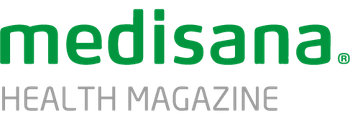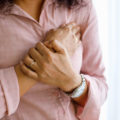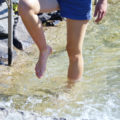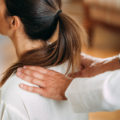TCM and conventional medicine
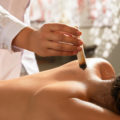
Traditional Chinese Medicine (TCM) combines many historically different Chinese forms of treatment as well as some diagnostic modalities. It is based on assumptions derived from Taoist philosophy. TCM is the traditional medicine with the largest area of distribution, especially acupuncture is practised worldwide today. TCM spread especially in Vietnam, Korea and Japan. On this basis, special variants developed in these countries, such as Japanese Kanpō medicine.
The oldest basic medical works that are still in use today are attributed to emperors who are said to have lived several thousand years before Christ. Emperor Shennong is considered the legendary author of (medicinal) herbal medicine around 3700 BC. Around 2600 BC at the time of Emperor Huangdi, medicine named after Huangdi was created. The historical source material spans more than three millennia.
The five pillars of Traditional Chinese Medicine
TCM is based on many pillars, which together result in a complex healing system, including acupuncture and the process of moxibustion (heat treatment of the acupuncture points) based on it, pharmaceutics, nutritional science, meditative exercise techniques such as Tai Chi and Qigong as well as the Tuina massage. TCM is based on a philosophical approach. The principle of Yin and Yang is fundamental to Tai Chi and Qigong. They combine exercises for relaxed concentration with physical and breathing exercises.
Pillar 1: Acupuncture and moxibustion
Pillar 2: Medicines (CAT)
Pillar 3: Coordination exercises (Qigong and Taiji)
Pillar 4: Massage (Tuina)
Pillar 5: Nutrition
In Europe, the oldest occupation with Chinese medicine – with acupuncture and moxibustion – goes back to the end of the 17th century. New interest emerged in the West in the first half of the 20th century, and with the opening of the People’s Republic of China in the 1970s, the methods began to be transferred to North America and Europe under the term TCM.
From the 1950s onwards, TCM found increasing interest in Western cultural circles. In Germany, naturopathically oriented doctors and naturopaths had dealt with TCM for the first time. The works of Manfred Porkert, among others, have contributed to the spread of TCM. His “Clinical Chinese Pharmacology” of 1978, for example, offered for the first time a comprehensive description of Chinese medicines in a Western language.
With the political opening of China and the associated simplification of travel, acupuncture in particular has experienced a real boom since the 1970s. One of the great protagonists of TCM among those traveling to China at the time was the North American Ted J. Kaptchuk, whose 1983 book “The Web That Has No Weaver” contributed significantly to the popularity of TCM.
From a scientific point of view, the therapeutic effectiveness of many TCM treatment methods is disputed and many treatment methods are regarded as pseudoscientific.
In addition, the holistic approach of TCM cannot be empirically proven. It works with organ and functional circuits that differ significantly from scientific anatomy. While TCM is traditionally used primarily as a preventive measure for chronic diseases and pain, conventional medicine primarily tries to find the cause of the disease.
If it cannot eliminate the cause, it treats the symptoms. It is said that “conventional medicine treats diseases, TCM treats sick people”. One example: Often, pain in western medicine is merely suppressed with painkillers. In Chinese medicine, the wider-ranging cause is found out and not just the symptom treated. Supporters of traditional Chinese medicine criticise that conventional medicine is not very goal-oriented and that “evidence-based medicine” is often ineffective or does not take the person as a whole into account. Ultimately, as always, it should be a question of faith. The fact remains that both camps keep getting tangled up with each other.
In China, citizens can choose, which clinic they want to go to. For example, there are about 4,000 traditional Chinese medicine clinics, and 36,795 Western-style hospitals. TCM is a fully institutionalised part of Chinese healthcare.
In 2006, the TCM sector served over 200 million outpatients and about 7 million inpatients, accounting for 10% to 20% of health care in China. Since 2005, the Chinesische Naturheilkunde Akademie (CNA) e. V. has been successfully offering Master’s programs in the field of Traditional Chinese Medicine (TCM) in cooperation with the Guangxi State TCM University.
Health insurance only partially pays for TCM treatments
TCM is reported as the most commonly used alternative form of therapy in 100 WHO member states. In 13 WHO member states, TCM is covered by national health insurance. In Germany, TCM treatments usually have to be paid for by the patients themselves; only acupuncture is covered by the health insurance companies if indicated. Private health or supplementary insurances usually cover all or part of the costs. The best thing to do is to ask your health insurance company.
The cost of a treatment is within a manageable range of 40 to 120 Euro per appointment, depending on whether it is a TCM prescription, an acupuncture treatment, an initial history or second visit.
No clear verdict on Chinese phytotherapy
Chinese phytotherapy (herbal medicine) has been examined in scientific studies. A meta-analysis by the University of Bern in 2007 examined numerous studies on Chinese phytotherapy in comparison with those of conventional medicine. The authors conclude that bias is more pronounced in the Chinese studies and that it is not possible to make an authoritative judgement on the effectiveness of Chinese phytotherapy due to the very small number of high-quality publications.
TCM neurology/vegetative treatments are used for age-related complaints, fears, anxiety disorders, burnout, depression, epilepsy, exhaustion/lack of energy, facial paresis (facial paralysis), headaches, paralysis and sensory disorders, migraine, fatigue, multiple sclerosis, nerve pain (neuropathy, neuralgia), panic attacks, sleep disorders, dizziness, mental problems, stress and restlessness.
Only a doctor can decide
Only the doctor can decide on the actual indication after a corresponding diagnosis. Treatment with Chinese medicine/TCM is also possible for the following diseases: Achilles tendon pain (achillodynia), arthrosis, arthritis, disc damage, carpal tunnel syndrome, fibromyalgia, joint pain, gout, sciatica/ischialgia/lumbago, knee problems, muscle/soft tissue pain, osteoporosis, rheumatic diseases, back problems (cervical, thoracic, lumbar), shoulder-arm syndrome, tennis elbow and injuries.
Further treatments arise for cardiovascular, respiratory tract/ENT, eyes, urology, gynaecology, skin, gastrointestinal, listlessness, bladder infections, high blood pressure, concentration disorders, headaches, loss of performance and metabolism / hormones. However, these are by no means all fields of possible treatments with traditional Chinese medicine.
If you want to learn more, talk to your doctor.
Sources:
apotheken.de
World Health Organization: Legal Status of Traditional Medicine and Complementary/ Alternative Medicine: A Worldwide Review. 2001, S. 2
Wikipedia
Ute Engelhardt, Carl Hermann Hempen: Chinesische Diätetik. 3. Edition. Urban&Fischer / Elsevier, Munich 2006,
Richard Stone: Lifting the Veil on Traditional Chinese Medicine. In: Science. Vol. 319, Issue 5864, 8. February 2008, S. 709–710
Hard to swallow. In: Nature. Volume 448, No. 7150, 2007, p. 105–106
Traditional Chinese medicine. In: who.int. 20 October 2008
- Shang, K. Huwiler, L. Nartey, P. Jüni, M. Egger: Placebo-controlled trials of Chinese herbal medicine and conventional medicine comparative study. In: International journal of epidemiology. Volume 36, Number 5, October 2007
WHO global report on traditional and complementary medicine 2019. WHO
- Shang, K. Huwiler, L. Nartey, P. Jüni, M. Egger: Placebo-controlled trials of Chinese herbal medicine and conventional medicine comparative study. In: International journal of epidemiology. Volume 36, Number 5, October 2007
dw.com/de/quackery or alternative what is traditional Chinese medicine
Practice Prof. Hempen & Colleagues Munich Specialist Centre – Chinese Medicine
Franz-Joseph-Str. 38 80801 Munich
